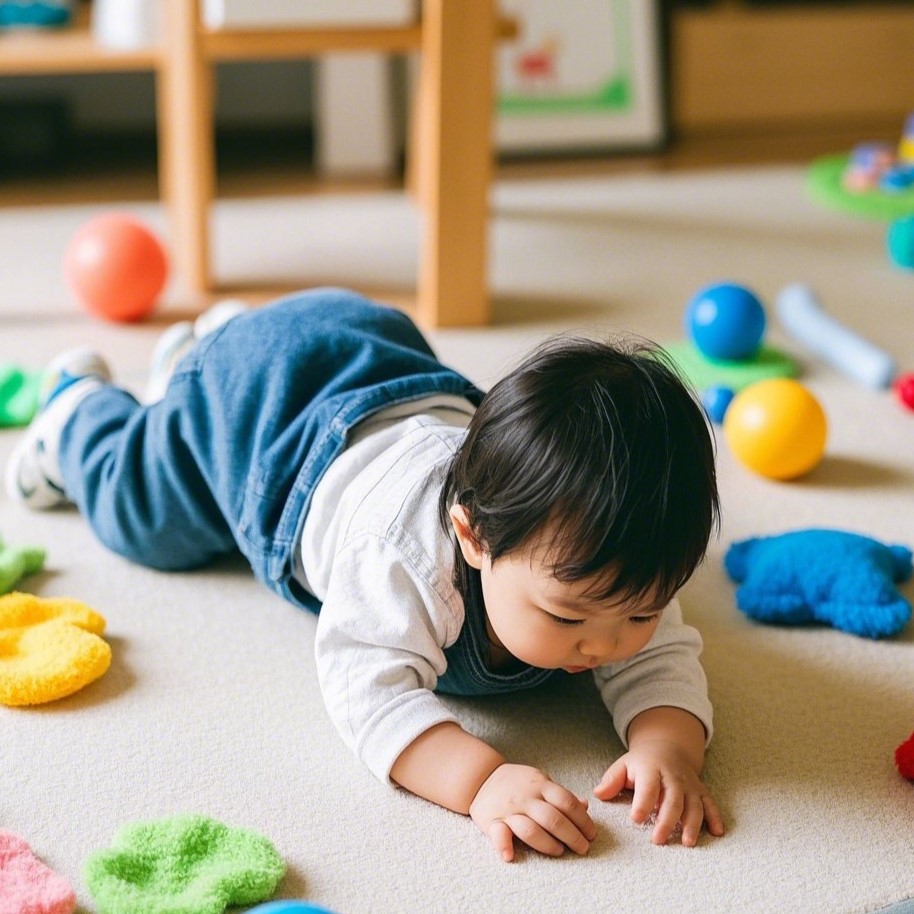The toddler and preschool years are a whirlwind of discovery, curiosity, and growth. During this critical stage of development, children are not just learning how to speak and interact—they’re building the foundation for lifelong physical and cognitive skills. One of the best ways to support this development is through sensory motor activities , which combine movement with sensory input to boost brain development, coordination, and body awareness.
Incorporating sensory motor skills activities into daily routines doesn’t just help children burn energy—it supports gross motor skills , fine motor skills , and overall toddler development in ways that prepare them for academic success and everyday life. Whether it’s crawling through tunnels, scooping sensory materials, or balancing on a beam, these hands-on activities enhance focus, build strength, and encourage independent exploration.
Ready to energize your little learner with purposeful play? Here are the top five sensory motor skills activities for toddlers and preschoolers that turn everyday fun into developmental gold.
1. Indoor Obstacle Course
There’s a reason obstacle courses are a favorite among young children—they’re packed with excitement and challenge. An indoor obstacle course engages the whole body, encourages problem-solving, and improves gross motor skills like crawling, jumping, and balancing.
How to Set It Up:
Use soft pillows for crawling over, cardboard boxes as tunnels, painter’s tape to mark balance lines, and chairs or stools to climb around. Guide your child through the course, adjusting it to suit their abilities and age.
Developmental Benefits:
- Builds spatial awareness
- Enhances coordination and balance
- Boosts confidence and independence
- Encourages sequencing and motor planning
This activity is not only physically engaging but also mentally stimulating. It helps children learn to follow directions, navigate spaces, and develop body awareness.
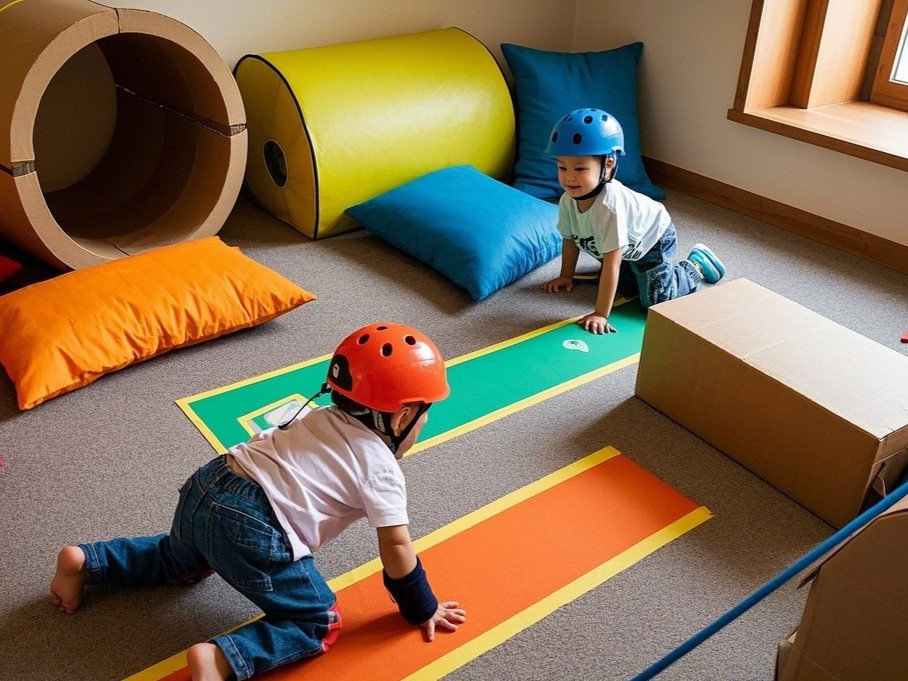
2. Sensory Scooping Bin
Scooping and transferring items from one container to another might seem simple, but it’s a powerhouse activity for developing fine motor skills and hand-eye coordination. A sensory scooping bin is an easy, mess-friendly way to help kids practice controlled movement.
How to Set It Up:
Fill a bin or tray with dry materials like rice, lentils, or beans. Add scoops, measuring cups, funnels, small containers, and even kitchen tongs to encourage a variety of movements.
Developmental Benefits:
- Enhances grasp strength and hand control
- Promotes sensory integration
- Teaches focus and patience
- Supports early concepts of volume and measurement
This activity also doubles as a calm-down tool, making it great for transitions or quiet time. Let your child explore freely or set up mini challenges like “scoop and sort” by color or texture.
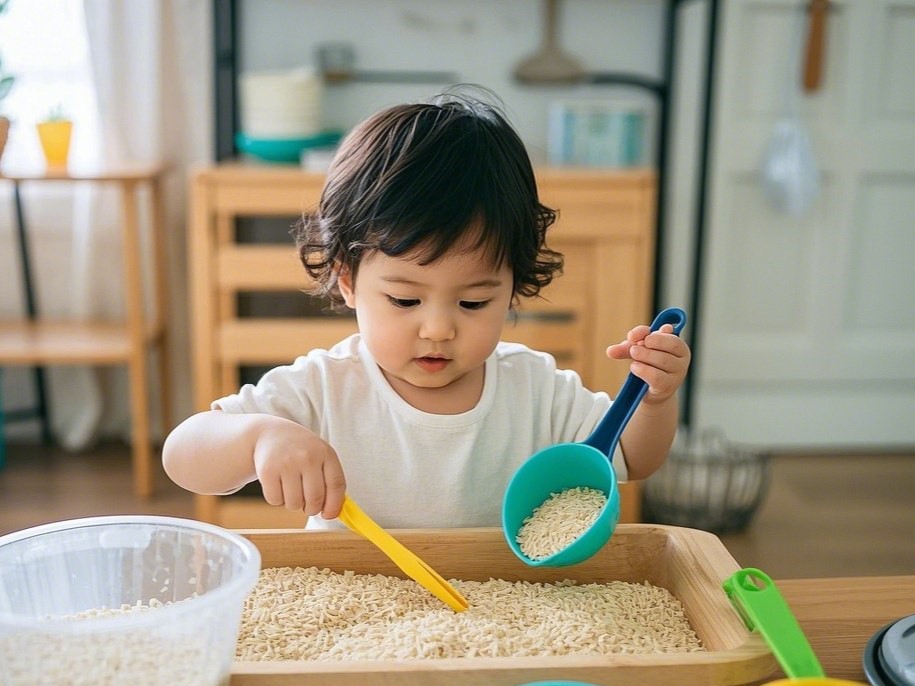
3. Balance Beam Play
Balance activities are essential for both motor development and core strength. A simple DIY balance beam can help your child learn to walk with control and stay upright—critical skills for walking, running, and even sitting still during circle time.
How to Set It Up:
Place a pool noodle, wide tape line, or low wooden plank on the ground. Invite your child to walk across it barefoot, heel-to-toe. Add variations by having them carry an object, squat, or walk backward.
Developmental Benefits:
- Improves postural control
- Supports core muscle development
- Boosts concentration and self-control
- Enhances vestibular processing (balance and motion)
Balance play is great for preschool readiness , especially when children need to navigate classroom settings that require body control and stillness.
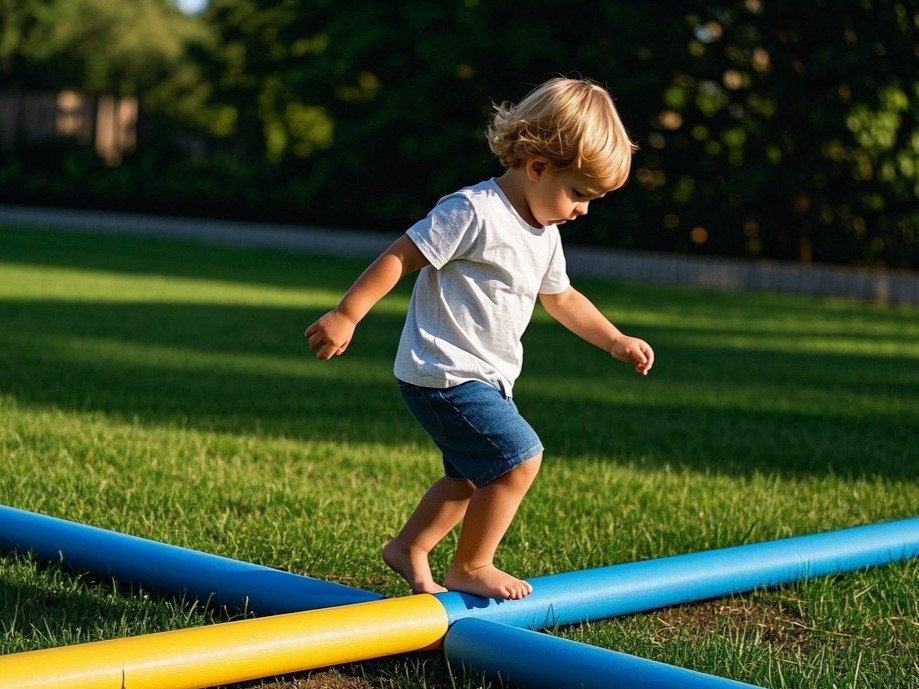
4. Texture Path Walking
Let your little one explore different sensations underfoot with a texture path , a tactile-rich experience that sharpens sensory processing skills and encourages physical exploration.
How to Set It Up:
Use textured items like bubble wrap, sponges, faux grass, fabric scraps, sandpaper, and soft rugs. Tape them to the floor to create a sensory path. Encourage your child to walk, crawl, or hop barefoot along the path.
Developmental Benefits:
- Enhances tactile discrimination
- Supports sensory integration
- Encourages motor planning
- Teaches descriptive language through touch
Texture walking helps toddlers and preschoolers process different touch sensations, which can also be beneficial for picky eaters or sensory-sensitive children.
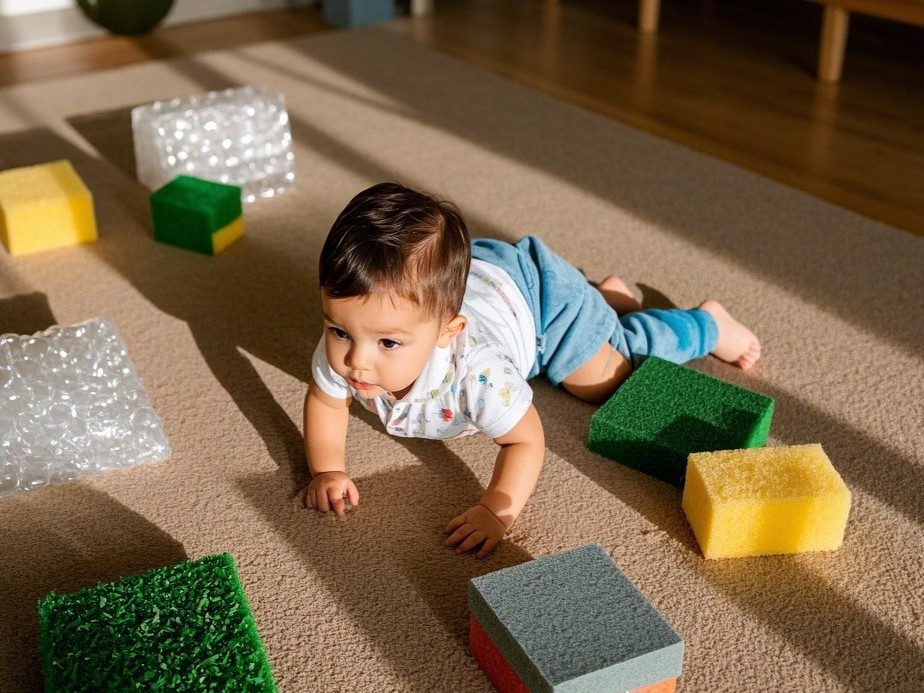
5. Animal Movement Games
Kids love to imitate animals, making animal movement games a playful way to improve coordination and body awareness. This activity promotes full-body engagement while allowing creativity and imagination to shine.
How to Play:
Call out or show pictures of animals and encourage your child to mimic their movements. Examples include:
- Bear crawl (on hands and feet)
- Frog jump (squat and leap)
- Crab walk (backward on hands and feet)
- Slither like a snake
- Flap like a bird
Developmental Benefits:
- Builds gross motor strength
- Enhances body control and flexibility
- Supports cross-body coordination
- Stimulates imagination and creative expression
These games are great for group play or indoor movement breaks. They combine sensory input with motor skills in a fun and energetic format.

Why Sensory Motor Skills Matter
Engaging in sensory motor play is not just entertaining—it’s essential. As toddlers and preschoolers interact with their environment through movement and sensory exploration, their brains form crucial neural pathways. These connections help children:
- Control their bodies and movements
- Respond appropriately to sensory stimuli
- Prepare for more complex tasks like writing, reading, and playing sports
- Develop self-regulation and emotional resilience
Sensory motor skills form the bedrock of early childhood development . Children who struggle in these areas may experience difficulty in school, social settings, or daily routines. By focusing on age-appropriate sensory activities , caregivers and educators can provide children with the tools they need to thrive.
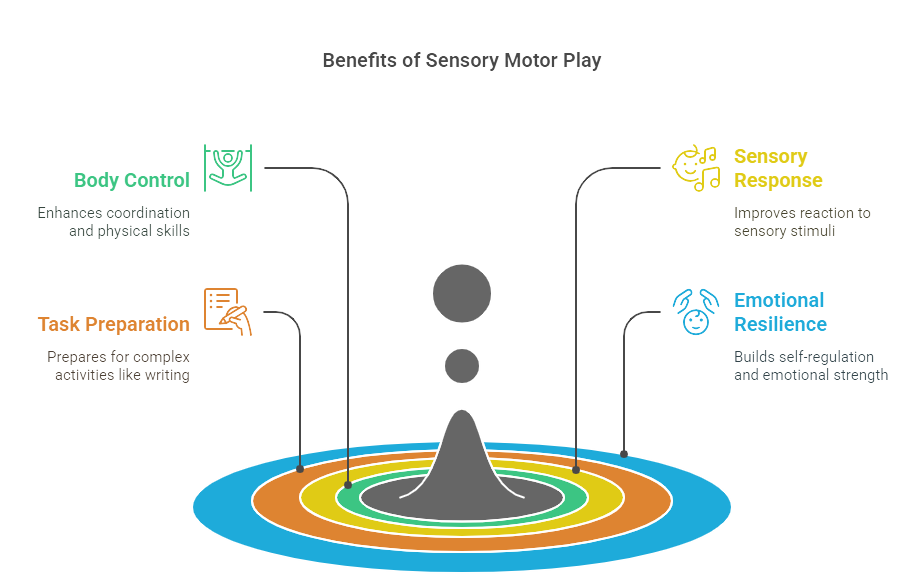
Tips for Getting the Most Out of Sensory Motor Activities
- Follow your child’s lead : If they’re fascinated by water, explore more wet sensory play. If they love movement, incorporate dance or sports-style games.
- Keep it safe and supervised : Always monitor young children during active or messy play.
- Rotate materials regularly : Changing textures, tools, or challenges keeps children engaged and curious.
- Create a consistent routine : Incorporate sensory motor play into your daily or weekly schedule.
- Celebrate effort, not perfection : Praise your child’s focus and participation, not just the outcome.
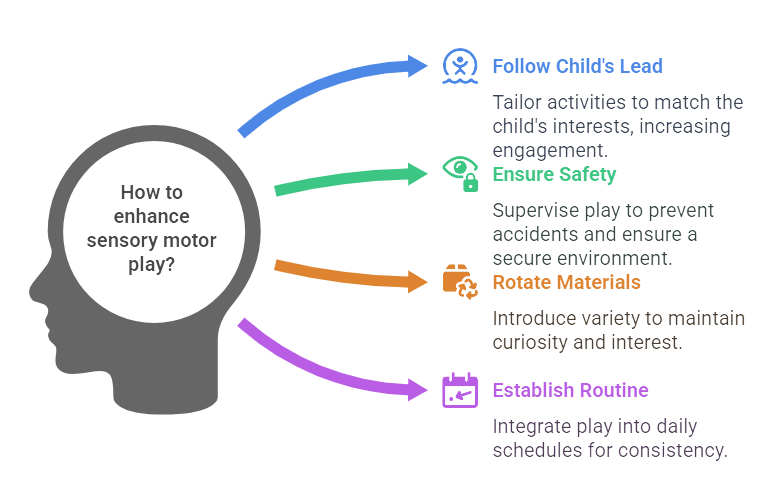
Final Thoughts
From crawling through obstacle courses to exploring textures with their toys, toddlers and preschoolers build essential life skills through movement and sensory play . These sensory motor activities don’t require expensive equipmentdon’t require expensive equipment or specialized knowledge—just a little creativity and a willingness to let your child explore the world through their senses and body.
your routineBy incorporating these five powerful activities into your routine, you’re not just entertaining your little one—you’re helping them grow stronger, more confident, and better equipped for everything life throws their way. In the world of early learning , sensory motor skills are always in styleare always in style.

